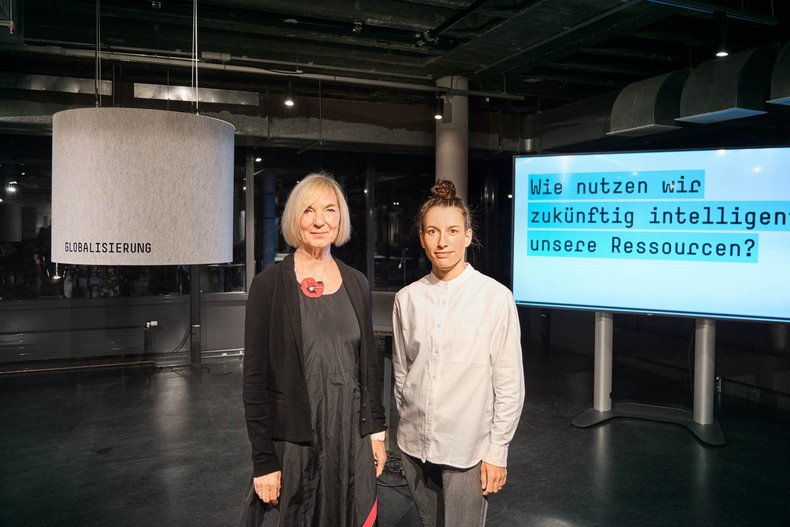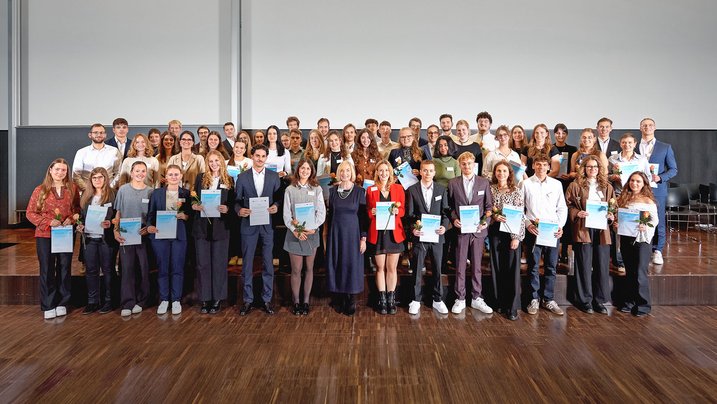The exhibition will run from September 27 to October 15, 2022.
Where: LUX Pavillon of Mainz University of Applied Sciences, Ludwigsstrasse 2, 55116 Mainz
How will we live in the future when our climate changes and energy becomes scarcer? How will we work when our professional and private lives move ever closer together? How can we make the transfer of knowledge both exciting and accessible in times of social networks?
Mainz University of Applied Sciences explores these and a number of other questions in its interactive exhibition Zukunfts-Impulse (Impulses for the Future). The exhibition, which was first developed on the occasion of the university’s 25th anniversary and has now been further expanded, invites visitors to express their own opinions at various stations, to spark impulses, and to discuss the major issues of the future with us. We show the megatrends that will influence the future we all share and the questions we are searching for solutions to across our three schools of Design, Engineering, and Business. A map of impulses for the future will continue to evolve at several stations over the duration of the exhibition.
Tour d’horizon
In her welcome address at the opening of the exhibition, Professor Dr. Susanne Weissman, President of Mainz University of Applied Sciences, defined the challenges facing universities in today’s world: “The world is changing at an incredible pace. As a university of applied sciences, we want to prepare students for this change to the best extent possible. We want to enable them to actively shape the future by developing sustainable solutions for the social challenges of today and tomorrow. We view ourselves as part of the city' s community, firmly rooted in the region, and we want to make our contribution to this region, which is an attractive place to live and is facing exciting developments.”
Afterwards, innovation and transformation expert Jule Bosch, invited by the university as an external source of inspiration, put on her “futurist goggles” and took the audience on a tour d’horizon through history. The megatrends that concern us today, stated Bosch in her keynote, have a long history. It takes around 30 to 50 years – think of the oil crisis of the 1970s – for a trend to become a megatrend. With inflation, the public health crisis, the energy crisis, and the climate crisis, we are now living in a time of “super wicked problems,” extremely perilous problems whose resolution cannot be postponed because time is running out. But, said Bosch, history is always a “whirlwind of trends and counter-trends” that begin with small bursts of change such as Fridays for Future, from which new things then emerge in a kind of synthesis of the future. And for that, the futurist concluded, we also need universities “that empower students to shape the future as a large-scale interdisciplinary project.”
Projects of the university – at the cutting edge
The projects presented in the exhibition give examples of the questions for which Mainz University of Applied Sciences is searching for solutions in its three schools of Design, Technology and Business – interdisciplinary and in constant exchange with industry experts.
Demographic change, digitalization, and changing shopping patterns call for new concepts to counteract the desolation of downtown areas. In the project Neustart Innenstadt! Interior Architecture students identified new uses for existing properties in Mainz that can contribute to revitalizing the city center.
Finding the most convenient parking garage in the city on any day and at any hour is made possible by a dashboard where drivers only have to enter their destination and the desired time. The Smart City tool is based on usage data from parking garages in Mainz, combined with weather forecasts and information on school vacations and public holidays, and was developed by students in the Geoinformatics and Surveying program.
How to generate energy for the university dining hall from organic waste – this is the focus of the model project Waste-to-Energy, which was developed at our partner university in Santiago de Chile with the assistance of a student from the International Civil Engineering program in Mainz.
A sustainable and effective neighborhood assistance program is a counterbalance in the trend toward urbanization. In a class offered by the School of Business, students transferred concepts of strategic management to a non-profit organization and developed ideas on how to tap into new target groups for the Taunusstein Neighborhood Assistance and make it even more well-known.




